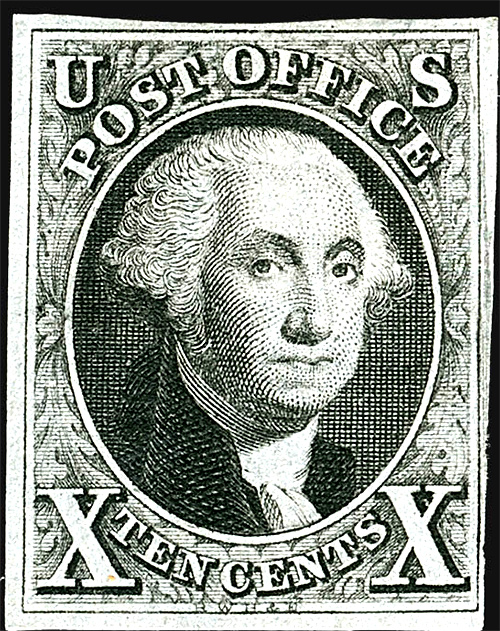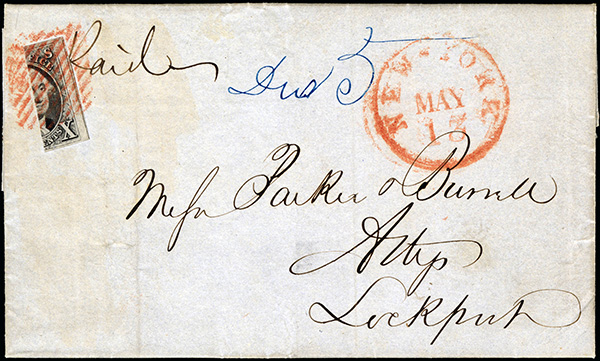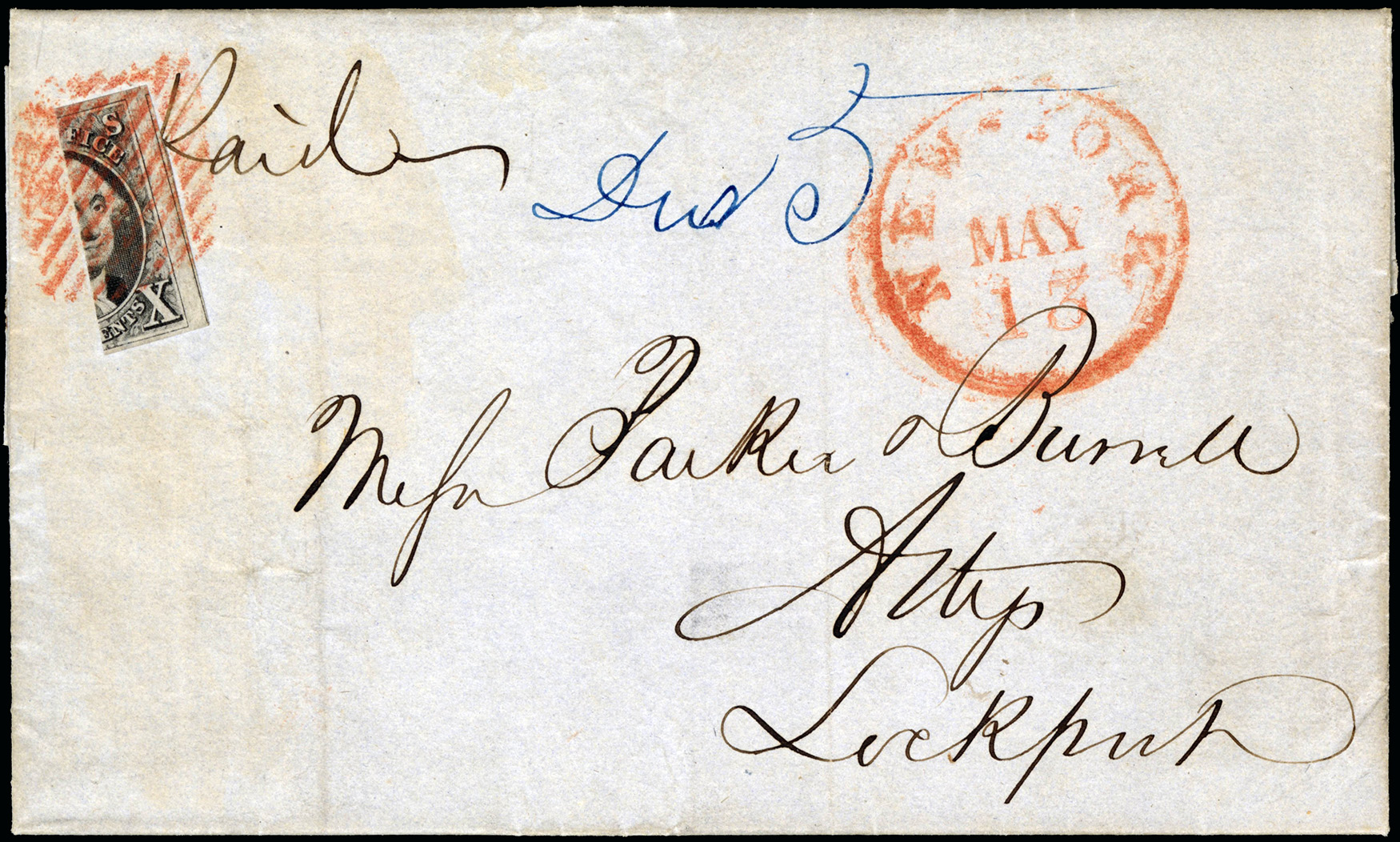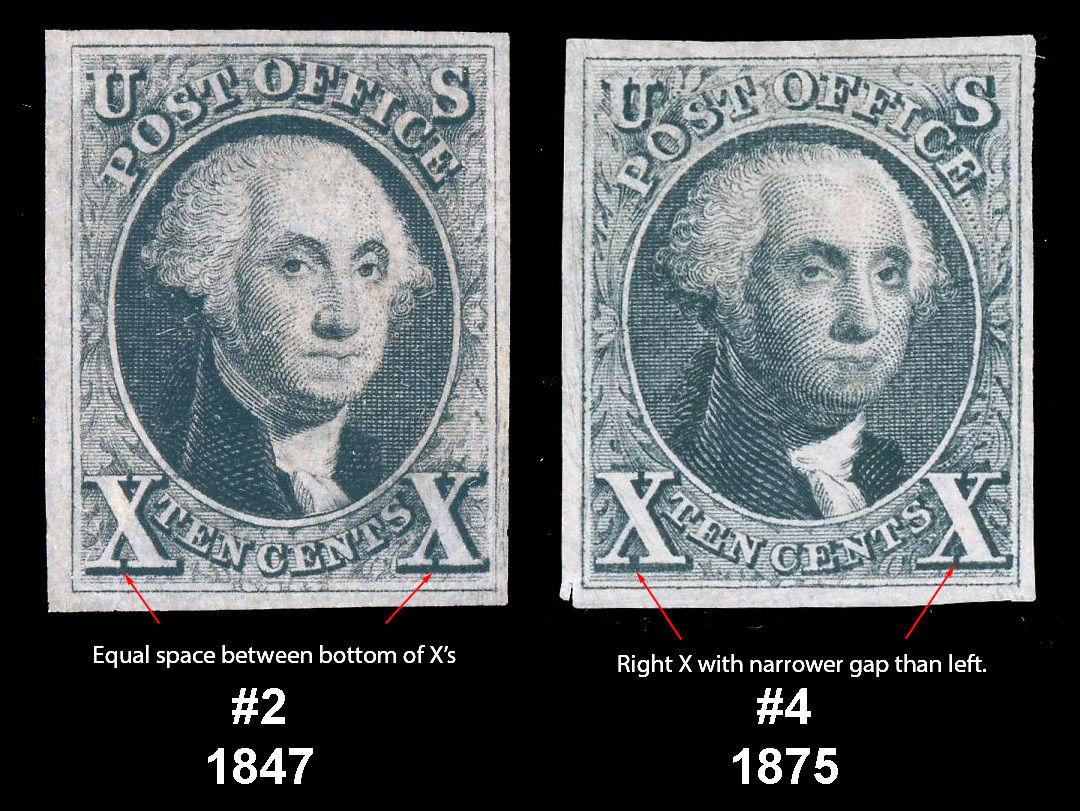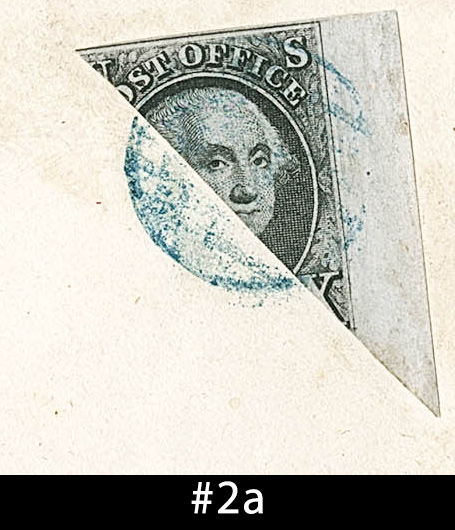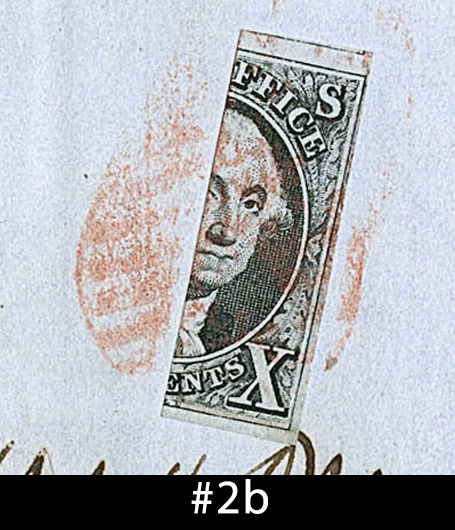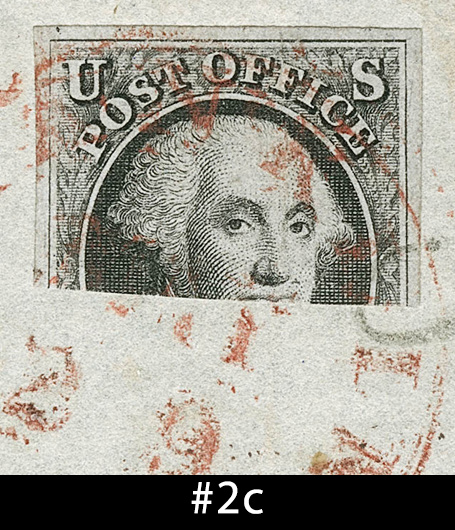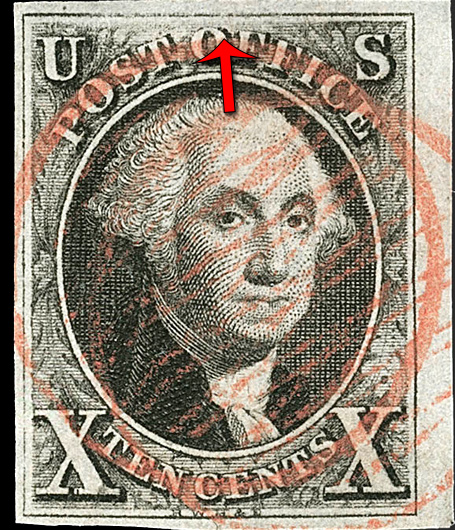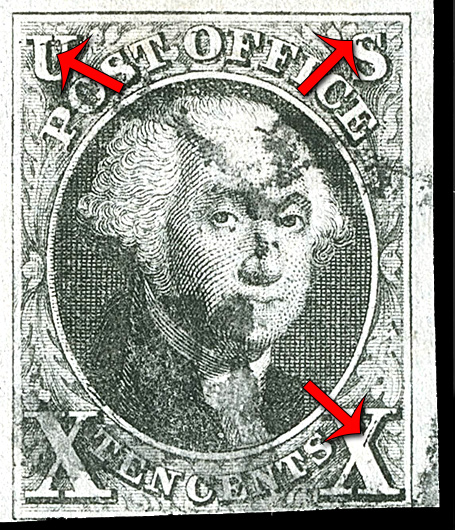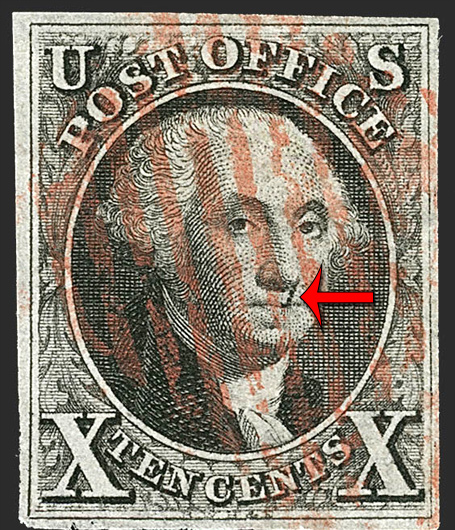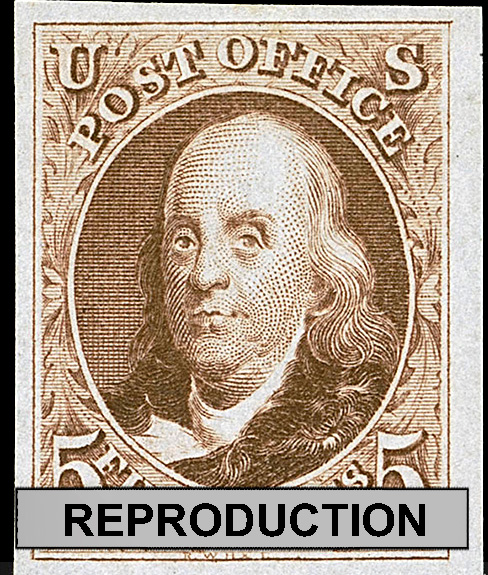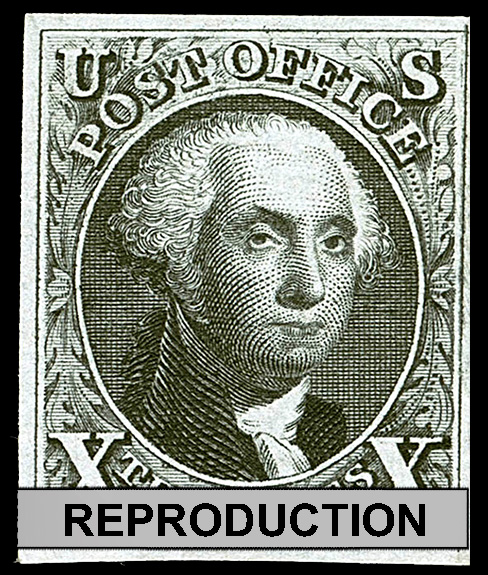Basic Info
10¢
Black
Subject: George Washington
Printing Method: Line engraved
Printer: Rawdon, Wright, Hatch and Edison
Perforations: imperforate
Watermark: none
Scott #: 2
Quantity Issued: 863,800
Issued: July 1st, 1847
Value
Values are for stamps with four margins
Used
$550 - $600
No postmark with gum (MH)
$13,500 - $17,500
Full perfect gum, no postmark
no trace of stamp hinge mark (MNH)
no sales recorded
Notable Sales

#2b tied by red square grid on 1848 folded letter to Lockport, New York, matching "New-York May 13" date stamp, blue manuscript "Due 5" at top, the bisect was accepted but 5c postage was still due as Lockport is over 300 miles from New York City. Earliest known use of a bisected American postage stamp
Sold January 2023 for $10,000
Explore H.R. Harmer's Auctions
Counterfeits
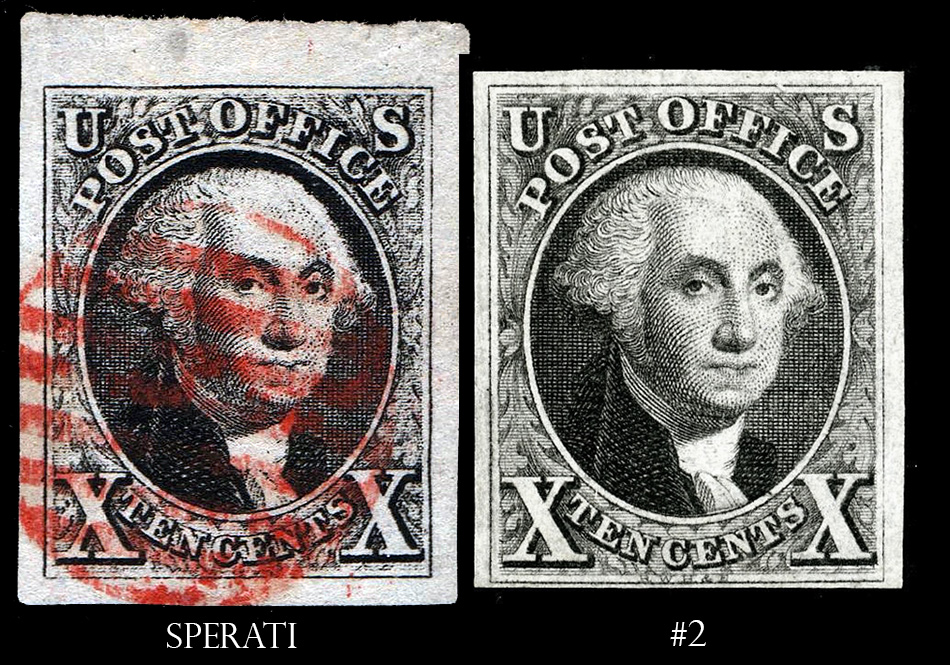
A counterfeit #2 compared to a genuine #2
The inspiration
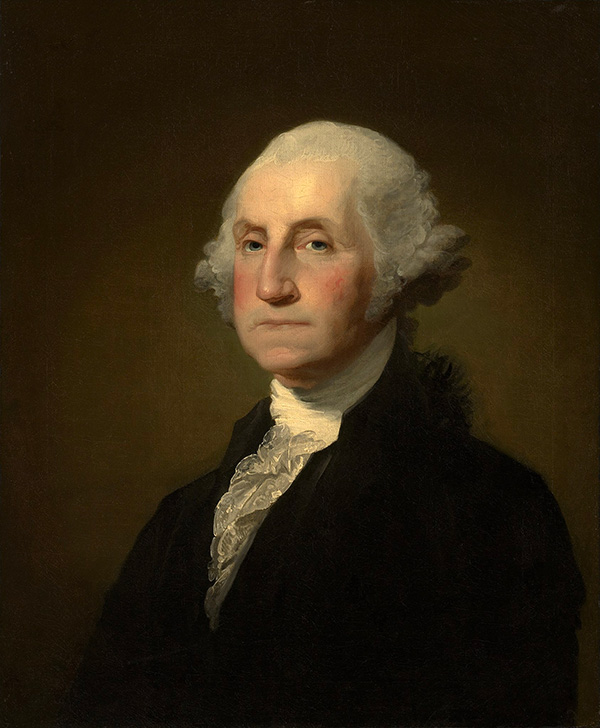
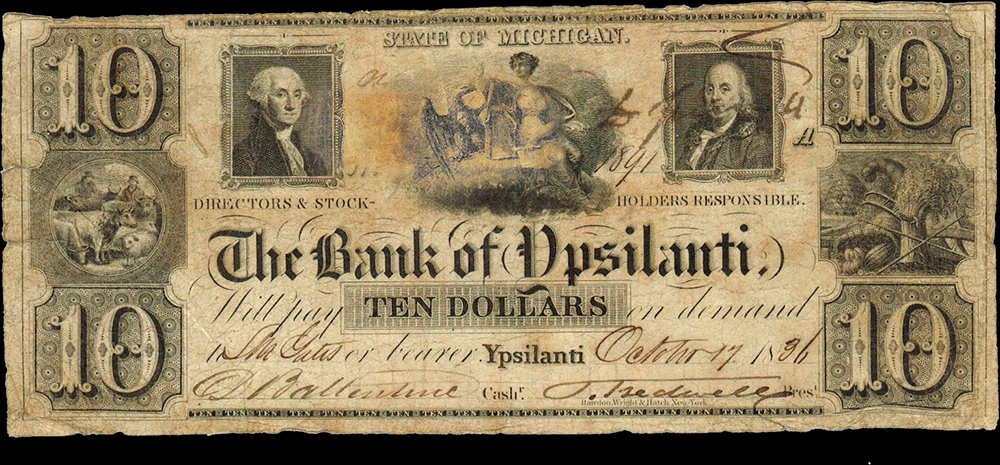
The vignette is based on a portrait of Washington by Gilbert Stewart. The portrait has been used on banknotes (see above) prior to the issuance of this stamp

Asher Brown Durand, the vignette's engraver
The first stamp
Under the powers given him by the Act of 1847, the Postmaster-General entered into a contract with Rawdon, Wright, Hatch, and Edson, which was located in New York City and was well and favorably known as Bank Note engravers. No details of this contract are known except that it seems reasonable to assume that it contained provisions for the production of stamps of the 5¢ and l0¢ denominations, under specific regulations and conditions, at a specified cost price per thousand.
Although the drop rate of letters at the time was 2¢ it was decided not to issue a stamp for this value, which would have to wait until the 1¢ issue of 1851.
George Washington was chosen as the vignette subject as he was considered the father of the Post Office and the first Post Master General.
Due to delays in production, there were only sufficient stamps to only deliver to the New York post office on the official day of introduction, July 1st, 1847. Boston was the second post office to receive a delivery on July 2nd, 1847. The first purchaser was reputedly Congressman Harvey Shaw of Connecticut.
Earliest documented use

The earliest documented use of #2 is July 2nd, 1847. Shown above is an early July 9th, 1847
Precancels
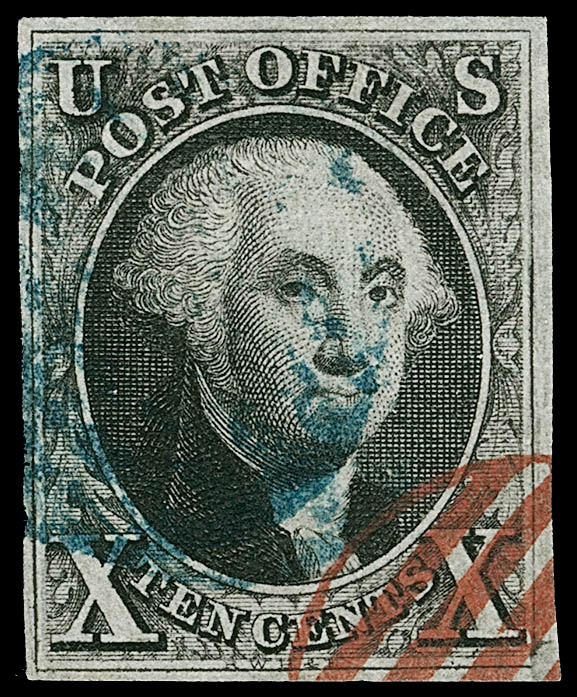
The 7 bar red grid precancel of Wheeling, Virginia.
